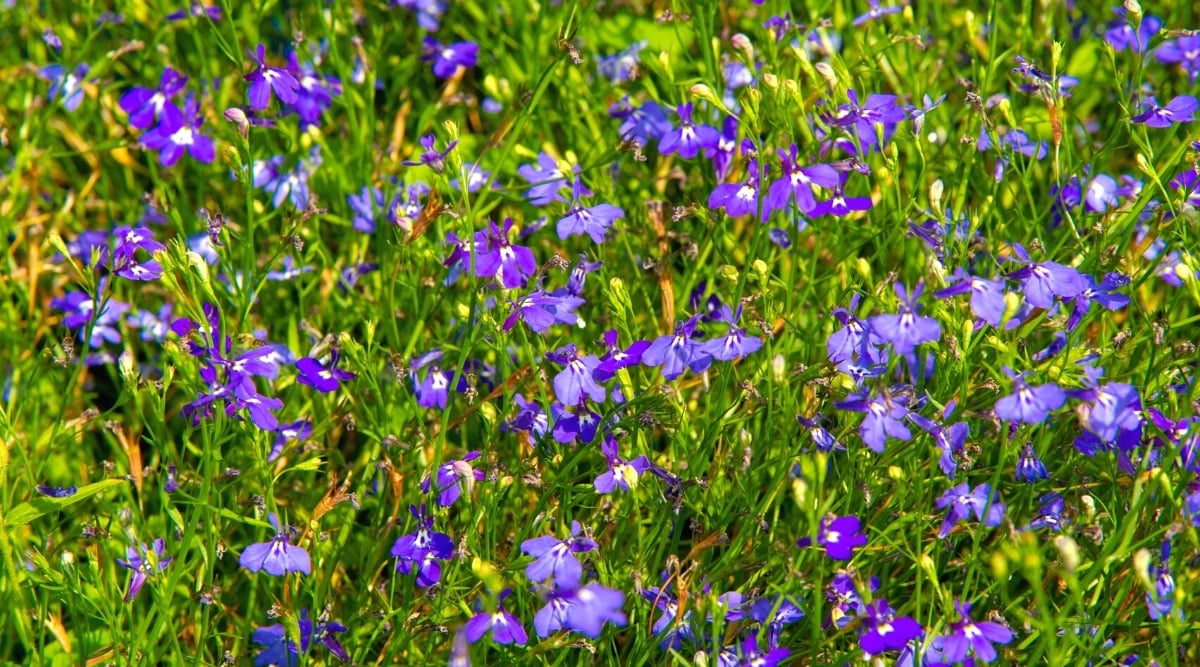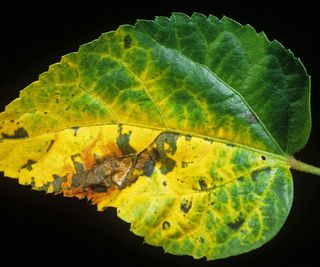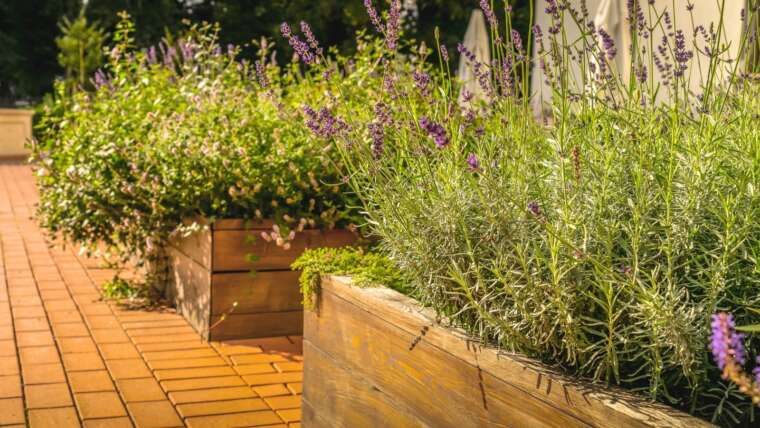If you have extra space in your garden, or are considering starting a new garden, you may be wondering what to plant. If you browse a seed catalog or walk through your local garden center, you may feel overwhelmed by the choices. There are so many interesting options, how do you begin to select your next garden plants?
From ground covers to trees, sun to shade, beautiful summer flowers to evergreen foliage, you can find plenty of plants to fit your specific needs. As you ponder the possibilities, you can also think about the origins of the plants you buy.
Are they native to your region or do they come from an entirely different continent? Native plants are plants that are native to your local area and provide a variety of different benefits to your garden. Let’s take a look at some of my favorite reasons that every gardener should plan on adding natives to their garden this year!
Native Plants Are Beautiful
There are many native ground cover plants, shrubs, wildflowers, and trees that are extremely attractive, varied, and hardy.
This may be the only reason you need to grow native plants: They are beautiful. There are many native species that have showy flowers, attractive foliage, or colorful berries. You can find natives that are evergreen for year-round greenery. Some may have beautiful flowers while others have attractive foliage.
Native plants are beautiful, but also have many different uses.
Native plants include wildflowers, ferns, grasses, ground covers, shrubs, and trees. You can easily create your entire landscape using only natives.
A well-planned native garden will be not only beautiful and diverse, but also low-maintenance and hardy. You will be able to enjoy your native landscape throughout the entire year and for many years to come.
They Will Fit All Garden Types
 Native plants are great for growing in theme gardens.
Native plants are great for growing in theme gardens.
Whether your garden is large or small, sunny or shady, wet or dry, you can find natives to fit your specific needs. Many people enjoy growing themed gardens, such as rock gardens, butterfly gardens, bird gardens, or herb gardens. There are natives to fit any garden theme or style.
You can easily convert a shady patch of the yard into a shade garden, or a sunny area into a full-sun perennial wildflower garden.
Choose a variety of plants to maximize your gardening enjoyment. Incorporate both tall plants and ground covers and choose flowers that bloom at different times of the year. Don’t forget to plant native trees and shrubs as well. You may be surprised by how many beautiful native plants you can find!
Benefits to Wildlife
 Native plants serve as a home for many insects and wild animals, and are their food source.
Native plants serve as a home for many insects and wild animals, and are their food source.
Native plants have a lot to offer for native wildlife, including birds, mammals, insects, reptiles, and amphibians. Of course, if you are growing wetland plants in a pond, you will also offer food and shelter for fish! Anyone who wants to plant a garden that benefits wildlife should seriously consider growing natives.
Native plants feed wildlife by providing an abundance of fruits, leaves, berries, and seeds. Hummingbirds, butterflies, bees, and other insects rely on them for food in the form of nectar and pollen. Butterflies depend on native plants as larval host plants to feed their caterpillars.
They also provide a home for wildlife. Trees and shrubs offer shelter and places to roost, build nests, and raise young.
Grasses and wildflowers also offer shelter, food, nesting locations, and nest-building materials. If you grow a variety of wildlife-friendly plants in your yard, you will not only enjoy the plants but also the interesting animals that come to visit.
Well-adapted to Your Climate
 In general, natives are already adapted to the local climate and tolerate heat, cold, humidity, or arid climates well.
In general, natives are already adapted to the local climate and tolerate heat, cold, humidity, or arid climates well.
Native plants are well-adapted to the local climate. You will not have to pamper a native plant that is already adapted to grow in the region. It will be able to tolerate heat or cold, humidity or arid climates, heavy moisture or low-moisture extremes.
A plant that is native to New England will be well-equipped to thrive in New England, just as a plant whose native range encompasses the southeastern states will thrive in Georgia.
The closer a plant grows to its native habitat, the better adapted it will be. But that doesn’t mean you can’t grow an eastern native plant in the west, or a western native plant in the east.
It just means you will need to pay attention to the hardiness zones, sun requirements, and water requirements. Choose plants whose preferred requirements closely match your local conditions.
You’ll Water Them Less
 Many natives are drought-tolerant and do not require additional watering.
Many natives are drought-tolerant and do not require additional watering.
Because they are well-adapted to the local climate conditions, you’ll water less. They may not require any supplemental watering at all. Native plants in the wild don’t require any more than natural rainfall, although many plants will appreciate some extra watering during an extended drought.
By not needing to water your plants, you will save yourself both time and money. The times you will most want to water your plants are when starting seeds, when transplanting, and while getting a new plant established in a new location.
Many native plants are drought tolerant, unless they are specifically adapted to grow in wet or boggy soils. These drought-tolerant plants have special adaptations to withstand dry conditions and won’t typically need any supplemental watering at all!
Little to No Fertilizer Needed
 Organic compost is the best fertilizer for native plants.
Organic compost is the best fertilizer for native plants.
Many cultivated and ornamental plants benefit from some sort of annual fertilizer application. Because native plants are well-adapted to the native soils, they may not require any additional fertilizers to be healthy and strong. If you do want to add some fertilizer to boost your plant performance, choose something light.
The best fertilizer to use is some type of organic compost. This can be your own aged compost from kitchen scraps, shredded and decayed leaf mulch, or another natural and organic compost generated from natural materials.
Natural composts are generally preferred over concentrated chemical pellets which can burn sensitive plants and contribute to chemical runoff.
They Are Pest-Resistant
 While natives can struggle with common diseases, most are naturally pest-resistant.
While natives can struggle with common diseases, most are naturally pest-resistant.
Native plants are resistant to many pests and diseases. This means you will use fewer pesticides, which saves time and money and is better for the environment. They have had a lot of time to evolve in a region and create healthy and vigorous offspring that are hardy and resilient.
Unfortunately, natives are not entirely foolproof. They will still sometimes be eaten by deer and insects, and may still succumb to common disease infestations, but in general, they tend to be quite hardy.
They Require Less Maintenance
 Many natives are low maintenance, requiring only regular weeding, removal of dead flowers and branches, and basic pruning.
Many natives are low maintenance, requiring only regular weeding, removal of dead flowers and branches, and basic pruning.
As mentioned already, natives use less water, need less fertilizer, and are hardy and tolerant to local environmental conditions. This makes many of them very low-maintenance! In addition to being low-maintenance, native plants can be remarkably easy to grow.
As with any gardening project, you will need to do some regular weeding, because weeds are very opportunistic and will grow anywhere there’s soil. You may also want to do some basic maintenance pruning, removing dead branches, or trimming shrubby plants to keep them the desired size.
Many wildflowers, both annuals and perennials, will spread over time. Larger groups of flowers may need to be thinned periodically to keep them looking nice and growing within specific boundaries.
If you are growing wildflowers in a large natural area, you can allow them to spread more freely. Native trees and shrubs tend to be very low maintenance.
Beneficial to Local Environments
 Natives are able to clean air and groundwater.
Natives are able to clean air and groundwater.
Native plants provide many valuable environmental services. They help with providing clean air. Like all plants, they take in carbon dioxide and release oxygen to breathe.
Native plants also help provide clean water. They act as filters for sediments and chemicals, keeping waterways and groundwater clean and free from pollutants.
And because they are relatively low maintenance, they don’t require the use of chemicals or regular mowing. Since you don’t need to apply chemicals or use power tools to maintain a native garden, fewer harmful chemicals are released into the environment.
They Companion Plant Well
 Grow natives with a variety of annuals and perennials both in beds and containers.
Grow natives with a variety of annuals and perennials both in beds and containers.
Native plants are highly compatible with many other plants. You can grow native perennial wildflowers with any other perennial.
You can grow native trees and shrubs in any landscape setting. And you can grow native ferns, vines, and ground covers without worry that they will become invasive and soon cover your entire landscape.
You can always have a landscape of just natives, or you can incorporate them into plantings with cultivars and introduced species. You can mix annuals and perennials or grow them in containers or garden beds.
Wherever you decide to grow natives, you can enjoy their unique contributions to the garden and know that they nicely complement many other plants.
Part of Nature’s Ecosystem
 Natives are important to the natural ecosystem and are a natural food source for many creatures.
Natives are important to the natural ecosystem and are a natural food source for many creatures.
Native plants are, of course, an integral part of the natural ecosystem. These are the plants that were here long before humans settled on the land.
Natives have an important role to play in the environment. They are part of the natural food chain and are a source of food and shelter for many wildlife species, as well as for humans.
They Provide Biodiversity
 If you are looking to create some biodiversity in your local ecosystem, natives are a great choice.
If you are looking to create some biodiversity in your local ecosystem, natives are a great choice.
Native plants are part of the natural landscape, and as such, provide valuable biodiversity. Having a variety of plants in a natural or cultivated environment provides many benefits.
Different species of plants bloom at different times, offering flowers to enjoy during different seasons. Having an extended flowering season also means that birds, butterflies, and honeybees have ready access to food during different seasons.
A landscape with vegetative biodiversity is good for the health of the landscape. Growing multiple varieties of plants means always having vegetation. In years that are particularly wet, dry, hot, or cold, there is always likely to be some type of plant that is thriving.
They Aren’t Usually Invasive
 Many native plants are capable of self-seeding.
Many native plants are capable of self-seeding.
Some natives do spread quickly and easily. You will find many plants are able to self-seed and many will increase by underground tubers of rhizomes. Fortunately, it is relatively easy to control the population growth of these plants.
You can usually help prevent unwanted self-seeding by deadheading spent flowers. Of course, many birds eat the seeds after the flowers die back, so you may want to leave the seeds for the birds. In this case, just be prepared to pull out extra seedlings each spring or share them freely with your gardening friends.
Provide Erosion Control
 Many native plants, such as American Beautyberry, are able to control erosion.
Many native plants, such as American Beautyberry, are able to control erosion.
Native plants are a natural choice to help control erosion. In areas with bare soil, on hillsides, or in flood plains, erosion can be a serious issue.
Natives can be used to help stabilize the soil and some species are very good at this environmental service. Other plants can be grown in wetlands and help stabilize the soil during periodic flooding.
They Can Replace Your Grass
 Consider replacing the grass with native wildflowers or shrubs to create biodiversity in your garden.
Consider replacing the grass with native wildflowers or shrubs to create biodiversity in your garden.
If you have a typical yard that is primarily grass, you may be aware that you can spend a lot of time and money and apply an assortment of chemicals to maintain your lawn.
If you’re ready to try something different, natives make a good alternative to grass. They are much more colorful and interesting than grass. Natives also provide biodiversity and wildlife habitat benefits that grass cannot provide.
You could plant an entire wildflower meadow, but you can also have just a small plot of flowering perennials. You could also plant some native trees and shrubs to help provide shade, diversity, wildlife habitat, and a bit of diversity in your yard.
Final Thoughts
There are many great reasons to grow native plants in your home garden. They are low-maintenance and offer tremendous diversity and intrinsic beauty.
Native plants also offer a wealth of benefits for native wildlife, and they are good for the environment. When planning your garden, select plants that are well-adapted to your local environment, and you’ll have a fast growing low-maintenance garden in just a few growing seasons.




